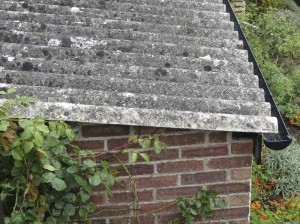Asbestos safety
Asbestos safety is a topic that needs to concern all homeowners, as the wrong type of asbestos exposure is a serious health risk. However, with any material that is potentially dangerous to health, as long as we all know what dangers are actually presented by that material, then it becomes more straightforward to deal with it in a safe way. Many of us have asbestos present in or around our homes, and the key thing to remember is that in most cases, it only starts to present a health risk once it is cut and/or disturbed.The problems associated with asbestos come into play when the fibres in its make-up are released into the atmosphere, and breathed in.
The following guide explains a little more about asbestos, what it is, the dangers it poses, where you’re likely to find it, and how to deal with asbestos in and around your home.
What is asbestos?
Asbestos is a naturally occurring mineral that has been used extensively in building and construction work in the last century. Because of its fireproofing and insulating properties, as examples, it was indeed seen as a very useful material. However, what wasn’t fully understood was the dangers that asbestos presents to health.
Why is asbestos dangerous?
Asbestos is dangerous as the fibres, if inhaled, can cause a selection of illnesses, some of which have very high fatality rates. The three main diseases that asbestos is associated with are:-
- Mesothelioma – a rare form of cancer that starts in the lungs. Normally fatal.
- Lung cancer – a cancer beginning in the lung. Often fatal.
- Asbestosis – an inflammatory condition of the lungs. Sometimes fatal.
Exposure to asbestos
It’s therefore vital to understand where we may have any exposure to asbestos in our homes. Below are examples of places you may find asbestos. This list is by no means exhaustive, but does provide a sample of the most common areas where asbestos has been used in home construction.

Corrugated asbestos cement roof sheets are one of the most commonly identified areas of where you may find asbestos around your home.
- Gutters and downpipes
- Vinyl floor tiles
- Roofing sheets
- Roofing felt
- Vermiculite
- Loose fill insulation
- Insulation panels
- Heating flues
- Textured ceiling coatings
- Pipe insulation
- Ceiling panels
- Ceiling tiles
- Soffits
- Roof tiles
- Bath panels
Dealing with asbestos
To complicate matters, there are different types of asbestos, some more dangerous than others. If you do discover, or suspect, that you have found asbestos, there are a number of courses of action open to you.
- Firstly, and in most cases, as long as it is left undisturbed, asbestos poses no significant health risk, and therefore no action is necessary. One main exception here is if the asbestos is damaged, or degraded, so that it could be releasing fibres into the atmosphere, in which case, seek professional advice on repair and/or removal.
- If you are carrying out any work that will require disturbing or removing any material that you suspect contains asbestos, then you must take precautions. It is possible to buy asbestos testing kits which basically give you the tools to remove some of the suspect material, and send it off to be analysed for asbestos content.
- You can also have asbestos surveys carried out by licensed contractors. They can then advise on safe removal and disposal.
- Check your local council website as they will have details about safe asbestos disposal in your area. They will be able to tell you what types need removal by a licensed contractor, and what types can be disposed of free of charge.
Resources
http://www.hse.gov.uk/asbestos/index.htm
https://www.gov.uk/asbestos-in-home
http://www.cancer.gov/cancertopics/factsheet/Risk/asbestos

I have recently taken part in an asbestos trainging course and this stuff is horrible. If you find asbestos in your home either leave it well alone or if you need to remove it get the professionals in. Even if your not sure if it is asbestos it is always better to be safe than sorry.